The Ultimate Guide to Different Types of Curtains: Linen, Cotton, Velvet, Silk and More
Navigation
- Introduction
- Common Types of Curtains
- Linen Curtains
- Cotton Curtains
- Velvet Curtains
- Silk Curtains
- Other Popular Types of Curtains
- Choosing the Right Type of Curtain for Your Home
- Conclusion and Final Thoughts on Types of Curtains
Introduction
Choosing the best curtains for your home involves more than color and pattern. From lightweight linen for coastal bedrooms to blackout velvet for cozy living rooms, the fabric type impacts light control, energy efficiency, and even your home’s resale value. In this guide, we’ll compare linen vs. cotton curtains, velvet vs. silk drapes, and other popular options to help you find the perfect types of curtains for every room.
Common Types of Curtains

- Linen: Breathable linen curtains keep rooms cool in summer and allow light to pass through. The curtains require minimal maintenance beyond spot cleaning. Great for crisp, coastal, and cottage styles.
- Cotton: "Strong, breathable, natural, and renewable, cotton is one of the most widely used materials in the textiles industry." via Textile Exchange. Natural cotton is durable and affordable. It absorbs moisture and lets air through, regulating temperature well. Cotton curtains may be prone to wrinkling, but they can be conveniently machine washed and dried without much hassle. Perfect for casual, relaxed spaces.
- Velvet: Luxurious velvet curtains create a plush, dramatic feel. Deeply absorbent velvet curtains block out both light and heat, bringing coziness. Requires professional dry cleaning. Ideal for formal, lavish spaces.
- Silk: Elegant silk curtains give a high-fashion glow. Silk allows a certain amount of light and heat to pass through while gently diffusing the view. Machines washable silk curtains avoid dry cleaning fees but still feel special. Strikes a balance of casual luxury.
- Bamboo: Ultra-soft bamboo curtains are naturally rash-proof and odor resistant. Thin bamboo curtains filter light while thicker bamboo curtains provide some insulation. Hand wash only. Comfortable, eco-friendly and versatile.
- Paper: Durable paper curtains convert a space into an art exhibit. Fawnskin or rice paper curtains diffuse soft light. Washi paper curtains showcase colorful Japanese-inspired designs. Conceal and reveal views in spaces high and wide.
- Metal: Metallic curtains, especially in pewter or copper, bring industrial chic style. Fully opaque metal shades out all light while filtering views. Requires lining for practicality. Makes a strong, edgy statement.
Linen Curtains

Light, breathable linen is one of the most popular and versatile curtain materials. And humans have been using flax for thousands of years, The Harvard Gazette published “Oldest-known fibers to be used by humans discovered”. Linen curtains keep rooms cool in summer and allow plenty of light to pass through, making them perfect for warm climates or spaces that lack airflow. Some key points about linen curtains:
- Linen is a natural fiber, lightweight yet durable. High-quality linen curtains can last 10-15 years with proper care.
- Linen curtains regulate temperature well, keeping rooms cooler in summer and less drafty in winter. They prevent overheating and condensation buildup on windows.
- Linen comes in a range of weights, from lightweight seersucker to heavy canvas linen. Choose a weight suitable for your climate and needs. Lighter weights filter more light while heavier linens offer more insulation.
- Linen curtains are low-maintenance. These curtains can be easily machine washed and dried, with only minimal wrinkling to worry about. No ironing is required! However, linen can shrink slightly after washing, so check the measurements after washing for a perfect fit.
- Linen comes in a variety of neutral shades as well as brighter colors and unique prints. Natural linen tones complement coastal, cottage, Mediterranean, and global-inspired styles.
- Linen curtains combine sophistication with casual ease. They strike the perfect balance of polish and relaxed comfort, suiting spaces from the bedroom to living room.
- Linen curtains are durable yet breathable. They prevent heat buildup and keep environments fresh while protecting windows from fading and damage. Perfect for covering patio doors, French doors, or large windows.
- Linen drapes beautifully for a rustic, billowy look or can be tailored precisely for a sleeker profile. Layers of linen create texture and fullness.
- Linen curtains add natural texture and dimension. The linen weave gives curtains depth and shape for visual interest. Wavy edges and raw hems also provide organic line and form.
With their lightweight yet durable and low-maintenance qualities, linen curtains make an ideal choice, particularly for warm climates. They breathe, regulate temperature and drape beautifully-what's not to love? Linen curtains will transform your space with style and subtle sophistication for years to come. Shop our linen curtain collection for your home space.
Cotton Curtains

Natural cotton is a durable, affordable, and versatile curtain material suitable for most interior spaces. Cotton curtains, also known as duck curtains, regulate temperature reasonably well while still being breathable. Some key points about cotton curtains:
- Cotton is a natural, breathable fiber that keeps rooms cool in summer and filters cold drafts in winter. Cotton curtains provide decent insulation while preventing overheating.
- Cotton comes in a range of weights from lightweight cotton canvas to duck, which is a medium-weight cotton ideal for curtains. Lighter kinds of cotton are more breathable while duck provides slightly more insulation.
- Cotton curtains are low-maintenance, as they can be machine washed and dried with minimal wrinkling. Keep in mind that cotton fabrics may shrink slightly after washing, so it's important to recheck measurements post-wash to ensure a perfect fit.
- Cotton comes in a variety of natural shades as well as bright colors and prints. Tans, creams, browns, and khakis complement casual neutrals while bright florals give a tropical feel.
- Cotton curtains evoke comfort, relaxation, and everyday ease. They suit casual family spaces, bedrooms, basements, and cottage homes equally well.
- Cotton drapes beautifully for a relaxed, rumpled look or can be ironed flat. Layers of cotton create cozy depth and volume.
- Cotton curtains wrinkle and crease visibly but this is part of their relaxed appeal. Washed cotton has a unique texture that many find endearing. For a less wrinkled look, choose duck cotton or higher-weight cotton canvas.
- Cotton is an inexpensive, versatile, and durable material. Well-made cotton curtains can last 7-10 years with regular use and care.
- Cotton combines affordability and all-season appeal. It's a budget-friendly option that suits most climates and interior styles from casual coastal to laid-back country and rustic makeshift spaces.
With their blend of affordability, durability, breathability, and relaxed ease, cotton curtains make an ideal, versatile choice for many interior spaces. They breathe comfortably, drape beautifully and suit a range of styles on any budget. Cotton curtains will bring cozy comfort and everyday luxury to your space for years to come.
Velvet Curtains

Luxurious velvet curtains drape windows with richness and decadence. Velvet is a deep, plush pile fabric that absorbs light and sounds exceptionally well, creating enveloping intimacy. Some key points about velvet curtains:
- Velvet is a luxurious pile fabric, thick and deeply textured. High-quality velvet curtains can last 15-25 years with proper care.
- Velvet curtains fully block out light, creating a moody glow. They absorb sound for an acoustic seal, muffling outside noise. Velvet is ideal for homes, apartments, or rooms in dire need of ambiance. Especially blackout velvet curtains for bedrooms can provide you with a high-quality sleeping environment.
- Velvet comes in a range of weights from lightweight cotton velvet to heavy silk velvet. Choose weight based on how much insulation you require and how heavily patterned your choice is. Lighter velvets filter some light through thicker patterns.
- Velvet curtains require professional dry cleaning. They cannot be machine washed or dried. Dry cleaning velvet curtains after every few uses help maintain pile and prevent matting. Dry cleaning fees can be expensive, so velvet curtains have a higher ongoing cost.
- Velvet comes in rich jewel tones as well as garishly patterned brocades. Deep reds, emeralds, crimsons, and plum hues dominate velvet color choices. If patterned, choose a simple repeat print large enough to cover the fabric pile.
- Velvet curtains exude opulence, grandeur, and lavish indulgence. They are ideal for formal living rooms, ballrooms, dining rooms, bars, and lounges. Velvet enhances fantasies of wealth and decadence.
- Velvet drapes beautifully when draped open or fully drawn closed. When open, velvet curtains pool on the floor for flowing depth. When closed, velvet curtains seal out light for an intimate cocoon. Velvet curtains are impressive in all configurations.
- Velvet adds texture, dimension, and sumptuous volume. Its deep plush pile reflects light for a breathtaking glow. Velvet pairs perfectly with gilt accents, mirrored surfaces, chandeliers, and ornate design elements.
- Velvet curtains muffle outside noise exceptionally well. Their dense, thick pile absorbs sound, muffling voices, traffic, and machinery. Velvet curtains can create an effective acoustic barrier for quiet spaces.
Due to high costs and maintenance requirements, velvet curtains suit luxury spaces above all else. However, their depth, dimension, and sensory pleasure make them worth the investment for the right room and budget. With professional care, velvet curtains will bring opulence and indulgence to your space for years to come.
Silk Curtains

Elegant silk curtains drape windows with grace, glamour, and sophistication. Silk is a luxurious, lightweight fabric that filters light beautifully while still warming spaces. Some key points about silk curtains are:
- Silk is a natural protein fiber from silkworms. High-quality silk curtains can last 20-30 years with proper care. Silk tears and damages more easily than other fabrics so handle it with care.
- Silk curtains filter rather than fully block sunlight for an ambient glow. Choose lighter silks for spaces that require plenty of light.
- Silk comes in a range of weights from delicate charmeuse to pongee linen silk. Lighter silks are more breathable while heavier silks offer more insulation. Charmeuse is ideal for layering and draping. Pongee creates texture.
- Silk curtains can be machine washed on a gentle cycle using cold water and mild detergent. Remove from the washer promptly to avoid wrinkling and always lay flat to air dry away from direct heat. Avoid fabric softener which can damage the silk fibers.
- Silk comes in elevated jewel tones as well as chiffon prints and embroidered damask patterns. Natural silk shades complement cool spaces while brighter shades warm neutral palettes. Unique prints and patterns lend visual opulence.
- Silk curtains exude luxury, glamour, and high fashion. They suit formal living rooms, dining rooms, dens, and home offices. Silk enhances fantasies of privilege, wealth, and refined taste.
- Silk drapes beautifully when fully drawn, parted, or draped open. When open, silk curtains puddle at your feet for flowing grace. When parted, draping silk filmy panels personalize sightlines. And when closed, silk curtains lend polish. Silk is luminous from every perspective.
- Silk adds sheen, drape, and a warm glow. Its protein fibers shine like satin when the fabric falls together. The warmth of silk enhances mood and renders space cozy, even when passing plenty of light.
- Due to initial cost and care requirements, silk curtains suit luxury spaces above all else. However, with proper care and storage, silk curtains will bring sophistication, glamour, and high fashion appeal to your space for years while only requiring occasional dry cleaning. Silk curtains strike a balance of upscale indulgence and accessible luxury.
Other Popular Types of Curtains

Beyond linen, cotton, velvet, and silk, several other curtain types worth considering include:
- Bamboo curtains: Ultra-soft bamboo curtains are naturally moisture-wicking and odor resistant. Thin bamboo curtains filter light while thick bamboo curtains provide insulation. Hand wash only. Perfect for humid, tropical spaces or areas prone to mustiness.
- Paper curtains: Rice paper, mulberry paper or washi paper curtains turn your space into a gallery wall. Diffuse soft light from eucalyptus, linen, or earthy materials. Paper curtains conceal and reveal at will for a dreamy look. Conceal large windows or dangerous drops for safety. There is a risk of moisture damage in high humidity environments.
- Metal curtains: Opal or charcoal gray pewter curtains bring industrial grit while silvery linen/cotton blends offer a softer metallic sheen. Metal curtains fully obscure views for privacy or block light for a cozy mood. Requires lining to prevent damage.
- Canvas curtains: Natural duck canvas or cotton canvas curtains create texture, breathability, and weathered appeal. Canvas curtains filter some light while keeping rooms cooler. Fray edges or distressed canvas further for a rustic feel. Affordable, durable, and long-lasting.
- Sheers curtains: Lightweight polyester charmeuse, georgette or chiffon curtains filter abundant light for an ambient glow. Metallic thread or high-twist silk sheers produce a subtle shimmer. Layer sheers for draped depth. Easy to machine wash and dry. Great for delineating spaces while allowing light flow.
- Faux silk or faux velvet curtains: Affordable polyester or polyester blend curtains offer the lush drape of silk or velvet at a fraction of the cost and care requirements. Upscale appeal without the investment. Built to handle machine washing and drying with minimal hassle. Great for embracing high fashion style on a budget.
- Thermal curtains: Insulated curtains made of polyester or bamboo fibers help retain heat inside spaces. Thermal curtains insulate better than most natural fabrics and leaded glass for maximum temperature control. Reduce heating/cooling costs and drafts for added comfort. Use in cold climates or over unsealed doors/windows.
Choosing the Right Type of Curtain for Your Home

Determining what attributes are most important in your new curtains will help narrow down the options. Some things to consider include:
- Insulation and breathability: How much light do you want to pass through? Block out heat/cold or allow air flow? Choose between linen, cotton, or silk for breathability or velvet, or wool for insulation.
- Light filtering or full coverage: Do you want a sheer curtain to diffuse light or block it out fully? Sheers and chiffons filter, blackout curtains fully cover.
- Washable or dry clean only: Washable cotton and linen curtains offer convenience for easy cleaning, while silk and velvet require dry cleaning. Consider care needs versus budget. You can also learn in advance how to wash and care for your curtains.
- Drape and fullness: Linen and cotton drape casually while silk and velvet offer fuller, luxurious drapes. Choose fullness and rumple from crisp maxi panels to heavy drapes.
- Formality and luxury appeal: Silk, velvet, and silk charmeuse convey opulence while canvas and cotton duck remain casual and affordable. Select formality based on space and personal style.
- Acoustic properties: Linen and velvet help contain noise, used in high-traffic spaces or bedrooms. Light, airy pieces of cotton offer little soundproofing. Consider neighboring space sounds.
- Cost: Affordable options include cotton, linen, and polyester/cotton blends. Luxury fabrics like silk or high-quality velvet incur exponentially more cost. Balance needs versus budget.
- Ease of use: High-maintenance fabrics complicated to care for may limit use. Consider how much additional effort you can spend on laundering, dry cleaning, and ironing beyond simply hanging curtains. Choose easy care when possible.
- Durability: Cotton duck, linen, velvet, and high-quality silks last 5-20+ years with proper care. Cheaper silks and polyester fabrics deteriorate quickly, lasting 2-5 years. Determine replacement frequency to ensure affordable use.
- Climate: Breathable, moisture-wicking bamboo and linen suit humid places while faux fur, wool flannel, and blanket-lined curtains retain heat for colder climates. Select for maximum temperature comfort year-round.
By outlining your priorities and determining key attributes, you can confidently narrow down options to the perfect curtain type for any space. Don't hesitate to ask if you have any additional questions or want recommendations based on specific factors, fabrics, or types of curtains. We are here to help provide guidance tailored to your unique needs and vision. Make your space more beautiful, functional, and comfortable with the right choice of curtains.
Conclusion and Final Thoughts on Types of Curtains
In summary, the ultimate guide to different types of curtains covers linen, cotton, velvet, silk, and more. From lightweight and breathable linen to plush velvet and lush silk, the curtain type you choose depends on how you use the space and the mood you want to create. Understanding different types will inspire possibilities and ensure you choose the best option to delight in for years to come. Please check our website if you have any other questions. You can also explore all curtain styles immediately at TWOPAGES Curtains.


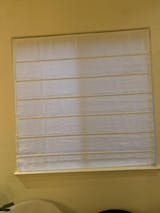
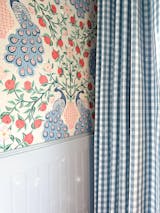
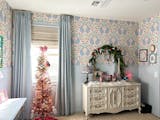
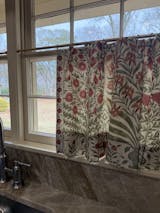



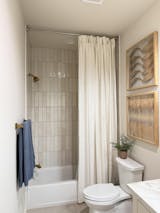
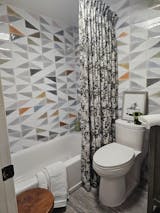
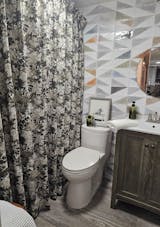
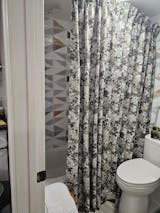
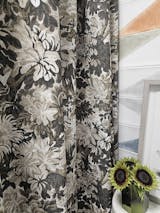
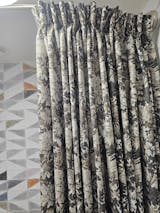
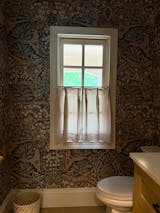
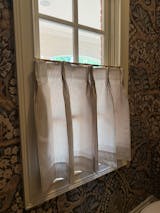
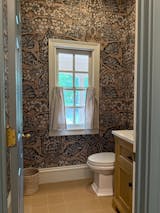
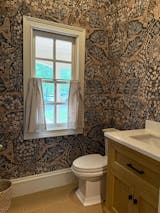
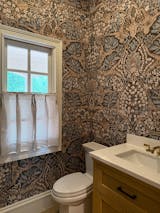
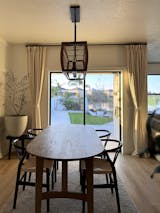
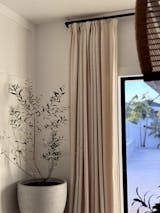
Leave a comment